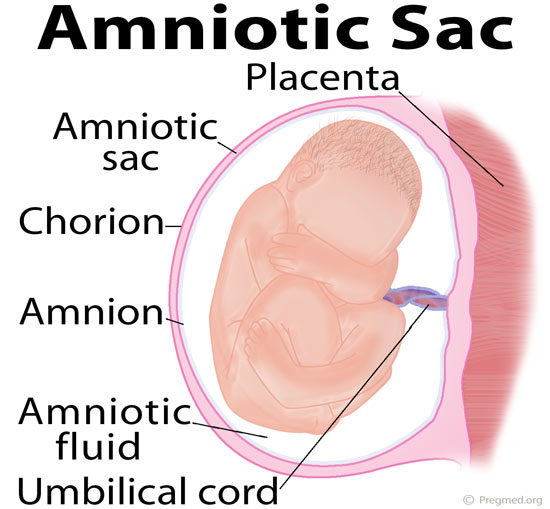On this page
Who is this information aimed at?
This leaflet is aimed at pregnant women with a finding of polyhydramnios on ultrasound examination. The leaflet should only be given with a consultation with an obstetrician.
What does polyhydramnios mean?
Polyhydramnios is diagnosed when the amount of amniotic fluid (also referred to as liquor) surrounding your baby is above the expected normal range. This range changes depending on your gestation. Polyhydramnios can only be diagnosed following an ultrasound scan.

What is amniotic fluid and what does it do?
During your pregnancy, the baby is cushioned inside a fluid-filled bag (amniotic sac). The wall of the amniotic sac is made up of two membranes which keep your baby safely sealed in the bag of amniotic fluid. These membranes usually break open before or during labour, which is commonly referred to as your “waters breaking”.
The amniotic fluid is there to cushion your baby and protect it from trauma and also to help with the development of the baby’s lungs, muscles and joints.
Why has this happened?
In most pregnancies where extra amniotic fluid is present, no cause is found and the babies are healthy when they are born.
There are some additional causes to consider that may need more tests during your pregnancy (these are less common).
- Your baby may be urinating more than average due to you having developed gestation diabetes (a form of diabetes associated with pregnancy).
- In a monochorionic twin (those that share a placenta) pregnancy this may be a sign of twin to twin transfusion syndrome (unequal sharing of the placenta).
- There may be something obstructing the movement through your baby’s gastrointestinal tract, such as a narrowing in the bowel, an obstruction within the chest or a mass in the neck.
- Rarely the amount of fluid round the baby builds up because of a problem with the baby’s swallowing, caused by a brain or muscle abnormality.
What does it mean for the pregnancy?
If the additional amniotic fluid is an isolated problem and the baby appears normal on the ultrasound scan, then it is not likely to have a negative impact for your baby. In some situations, the additional fluid in the amniotic sac may mean that the baby may not settle into a head first (cephalic) position. The increased size of your uterus (womb) can also put you at an increased chance of your waters breaking before your due date. If the baby’s head is not engaged at this point there is a risk of the umbilical cord delivering first. This can be dangerous situation and you may need a Caesarean section.
If any other problems are found in the baby during the ultrasound scan then additional tests and scans may be needed. These will be discussed in detail by your fetal medicine consultant.
What do I do next?
We may refer you to the Fetal Medicine Department at the Royal Victoria Infirmary. The Fetal Medicine Department provides highly specialist care to women from the North East and Cumbria with complicated pregnancies. The doctors in the Fetal Medicine Unit will assess your baby in detail and organise a monitoring and management plan specific to you and your baby. Depending on these findings you may be offered treatment and future appointments for scans. A treatment option involves drainage of the amniotic fluid by using a needle which is inserted into the womb through your abdomen.
For further information
For further information please contact:
Fetal Medicine Department,
Royal Victoria Infirmary
(0191) 2825837
Monday –Friday 9-5pm
Be sure to ask questions to the doctor supplying you with this leaflet and make a note of any questions you would like to ask at your next Fetal Medicine Unit appointment.
Antenatal Results and Choices
0845 077 2290 or 0207 713 7486 via mobile
North of Tyne Patient Advice and Liaison Service (PALS)
0800 0320202
Monday to Friday 9.00-4.30pm (answer phone out of hours)
Email: [email protected]
Resource Information
Information produced by Lesley Walker (Fetal Medicine Clinical Lead)
Date July 2019
Updated by Angela Lightfoot: 21/07/2023
Review date: July 2026